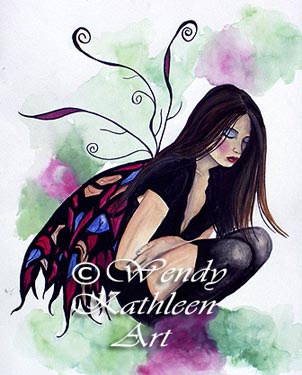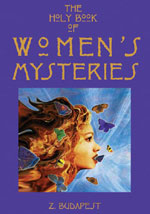Winter Herbal Adventure - part 2
by Jane Foxglove
I am sure by now that our Parrot and Puppy wonder where we are and that my Mom and Dad are worried that we are late getting back. I hope they notify someone that we have not reached the airport in New Jersey.
Doc had wondered what types of plants and herbs and trees grow here in the wilds of the northeast. This is NOT the way I had planned to show him!
I was anxious to explore around our campsite. Charlie stayed with Lynn to keep the signal fire burning. Both parties had a whistle to signal for help in case of bear sightings or danger. Doc was sore and stiff but with a walking stick he adventured into the woods with me. Eagerly I wandered, but never far from his watchful eye. He had the presence of mind to mark our trail and turns with small piles of rocks and twigs so we could find our way back.
Both parties had a whistle to signal for help in case of bear sightings or danger. Doc was sore and stiff but with a walking stick he adventured into the woods with me. Eagerly I wandered, but never far from his watchful eye. He had the presence of mind to mark our trail and turns with small piles of rocks and twigs so we could find our way back.
I recognized a Black Birch tree with the smooth bark and horizontal cracks. Not many leaves were left on the tree. We collected small branches and twigs. When we did the scratch and sniff test on the tender bark we could smell the wintergreen oil scent. This could later be made into a tea. A cup full would be equal to one fourth or one half an Aspirin as an anti inflammatory.
Nearby was a Sassafras tree. I recognized the mitten shaped leaf, some were oval and others had three lobes. The root bark has a root beer taste. We collected some to mask the taste of the water purification tablets and make a healing tea for rheumatic pain and a compress for swellings and bruises.
Mullein Flower spikes stood tall along the rocky rough ground. I collected the leaves to use as a cough remedy for Lynn, the hairy leaf tea would need to be strained thru a bandanna to remove the fuzz that could irritate her throat. Burning some of these leaves could create a healing smoke during an asthma attack. I saved some of the tall flower spikes to burn as taper candles.
Queen Anne’s Lace or Wild Carrot grew nearby. Doc noted that the fuzzy stalks visually gave us a clue that this was not the smooth stalked Poison Hemlock. I thanked the plant for giving us the healing carrot-like root for our soup. The richness of Vitamin C and carotene would be mildly diuretic and lower blood pressure.
Doc and I laughed and said we could create the tastiest Stone Soup to keep us alive on this mountain. Burdock grew near the field with its huge hairy elephant ear leaves. The burrs that carry the seeds of the plant on the fur of deer and forest animals stuck like barbs in the wool of my capote sleeve. The beige taproot could be thinly sliced into our soup; the inulin and protein would be good for Doc and Charlie's diabetic sugar levels. Doc told me how he had bruised and shredded the leaf and mixed it with egg whites to poultice a burn victim at a retreat. The leaves used internally and externally could treat hair loss, ringworm, eczema and skin eruptions.
Pear shaped Puff Ball Mushrooms grew on an old log. To me it looked like a dirty Styrofoam golf ball. It had no stem or gills like an Amantra mushroom. Doc cut one open to be sure it did not have black/purple spores inside like a Poison Pig Skin puffball. We decided this would be a safe addition to our soup.
Red Reishi mushrooms hung like little shelves on an old dying Maple tree, the dark red color reminded me it would be a nourishing blood purifier, We carefully wrapped the mushrooms in paper to catch all the spoor dust. Sliced into our soup, it would give the brew a meaty texture.
Herbalists have used the Reishi for healing cancer and during Chemo/Radiation therapy to enhance immunity, lower blood pressure, sooth sore joints, tendons and bones.
 Dandelion greens were easy to spot in the melting snow. Fortunately the ground was not yet frozen and we could easily pull out the taproot and leaves. The natural inulin sugar would help both Doc and Charlie's diabetes. The nourishing vitamins and minerals were a healthy addition to our soup. One leaf was worth 500iu Vitamin C.
Dandelion greens were easy to spot in the melting snow. Fortunately the ground was not yet frozen and we could easily pull out the taproot and leaves. The natural inulin sugar would help both Doc and Charlie's diabetes. The nourishing vitamins and minerals were a healthy addition to our soup. One leaf was worth 500iu Vitamin C.
Garlic Mustard's heart shaped scalloped leaves had a pungent garlic bitter flavor; the white fleshy roots would add more flavor to our soup. We remembered Steve Brill’s lecture on how this leaf is a natural antifreeze-- it lowers the freezing temperature of water! We both decided to chew a few leaves just in case we got any colder. What a shame it would not work in the plane.
Plantain stalks poked up nearby. The seeds were easy to tap out of the stalk to save as a soup thickener. The leaves would be good for burns and bruise poultices.
As we circled the field, I saw a beautiful sight, a gnarled tree with dark colored bark that had a rectangle mosaic pattern. Birds were happily feeding on some shiny dark copper fruits. Persimmons! The sweet fruits were bruised from the frost and snow. The scent of the mushy nectar had also attracted some drowsy bees who should have already been hibernating for the winter. The sticky juice helped sweeten the garlicky after-taste in our mouths from the mustard greens. We harvested more fruits to take back to camp.
Nearby a Stinging Nettle bush with its wealth of vitamins and minerals in the leaf could be added to our soup. The stingers would soften in our cooking pot and become a tonic for lungs, asthma and a kidney flush to reduce diabetic sugar levels and diarrhea, worms, hemorrhoids and colon disorders. My leather gloves protected me from the stingers as I harvested the leaves.
Comfrey, my personal totem plant, is also called "Knit-bone" with its long full and fuzzy green leaves. In the fall the flowers had faded but the leaves were easy to gather. We would be able to soften the leaf hairs with a little hot water to make a poultice wrap for Lynn's ribs and Charlie's knee. I pulled up some of the root for our soup. The calcium boost would treat arthritis, rheumatic joints, burns, cuts and bruises. The remaining root left in the ground will re-grow a fresh plant in the spring.
Slippery Elm tree with its sticky inner bark could be chewed or brewed for internal inflammations and external poultice. Powdered, the bark would thicken our soup.
Witch Hazel blossoms late in the year after the leaves have fallen, and it grows well under the tree canopy. A tea of its inner bark is quite calming and nourishing for internal bleeding and intestinal, uterine and hemorrhoid problems. This is a wonderful menopausal remedy.
Red Oaks grow in our woods. Their small bitter acorns were pretty well picked over by the local squirrels. An oak gall or pollen ball was easy to pluck from a low branch. The potent tannic acid would act as a styptic to stop bleeding or to bathe wounds. The tightening astringent of the leaves and twigs could be chewed or brewed as a tea. A little bit goes a long way
.
Small Partridge berries or Squaw Vine grew low to the ground like a carpet. The red oval berries grew in pairs and looked fused together. I remembered this could be tinctured as a Mother’s Cordial for fertility and a uterine tonic for cramps.
Wintergreen's shiny leaves lead me to the sweet reddened berry. The methylsalicylate in the leaf is related to Aspirin and has pain killing anti inflammatory use for muscle aches.
As I reached for another vine with a white berry climbing a tree Doc yelled, “Don't touch that!” I had not recognized the poison ivy hairy vine because the leaves had started to turn a reddish bronze from the cold. In my backyard the shiny green "leaves of three-stay away from me" are usually in one area. Doc said ‘hairy rope don't be a dope" with a smile.
By now we were hungry and tired and had circled around back to our camp to start a nourishing pot of soup and attend our injured loved ones. Doc was able to make a poultice with the plantain, mullein and comfrey leaves and bind it to Lynn's ribs and Charlie's knee.
As the soup simmered, we snacked on cheese and a few pine nuts Charlie and Lynn discovered near our tipi. The heat from our camp fire may have released the pine nuts from the hanging cones. Within an hour we decided to give the soup a try. Hungry people will eat darn near anything!
A young male bear smelled our cooking pot and wandered close to our camp. Lynn handed Charlie the gun Doc had kept in the tent. He fired two shots and scared it away.
After all the excitement our soup had cooled off a little bit and we added crumbled cheese to our mugs of soup making it creamier and tastier. Oh the power of cheese!
In the distance we heard a helicopter coming around the mountain! Our smoke signal had been spotted! Rescue was on its way. Within the hour we were air lifted to the hospital. X-rays showed that Lynn's cracked ribs had already started healing, and Charlie's knee was still sore but not broken. Doc was relieved that everyone was going to be OK. Getting the plane off the mountain would be another problem. Maybe it was still under warranty!
2008 © Jane Volkmann/Jane Foxglove
Vfoxglove@aol.com
I am a Reiki Master and Herbalist living in Bloomfield NJ with My husband Charlie, Parrot Grizwold and Mini Dachshund Lexi. This story was written as a part of an online herbal survival class with Chuck Garcia to illustrate knowledge and uses of regional herbs and how to identify them in winter season.

Using Herbs Simply and Safely - 2 CD Set
 Using Herbs Simply and Safely
Using Herbs Simply and Safely
2 CD Set
Susun S Weed – HerbFest 2000
(Length - 1 Hour/50 Minutes)
$22.50
Susun Weed discusses homeopathy, allopathy and simplifies and categorizes herbs into four groups for safe use.Are herbs natural and therefore safe? Or are herbs really drugs in green guise and therefore dangerous? Are standardized extracts safer? Are combinations of herbs necessary? What about homeopathy? Whether your interest in herbs is new or well-seasoned, this talk will help you understand how to get the most out of herbal medicine -- with the least risk.
Price: $22.50
Order Using Herbs Simply and Safely in our Bookshop






